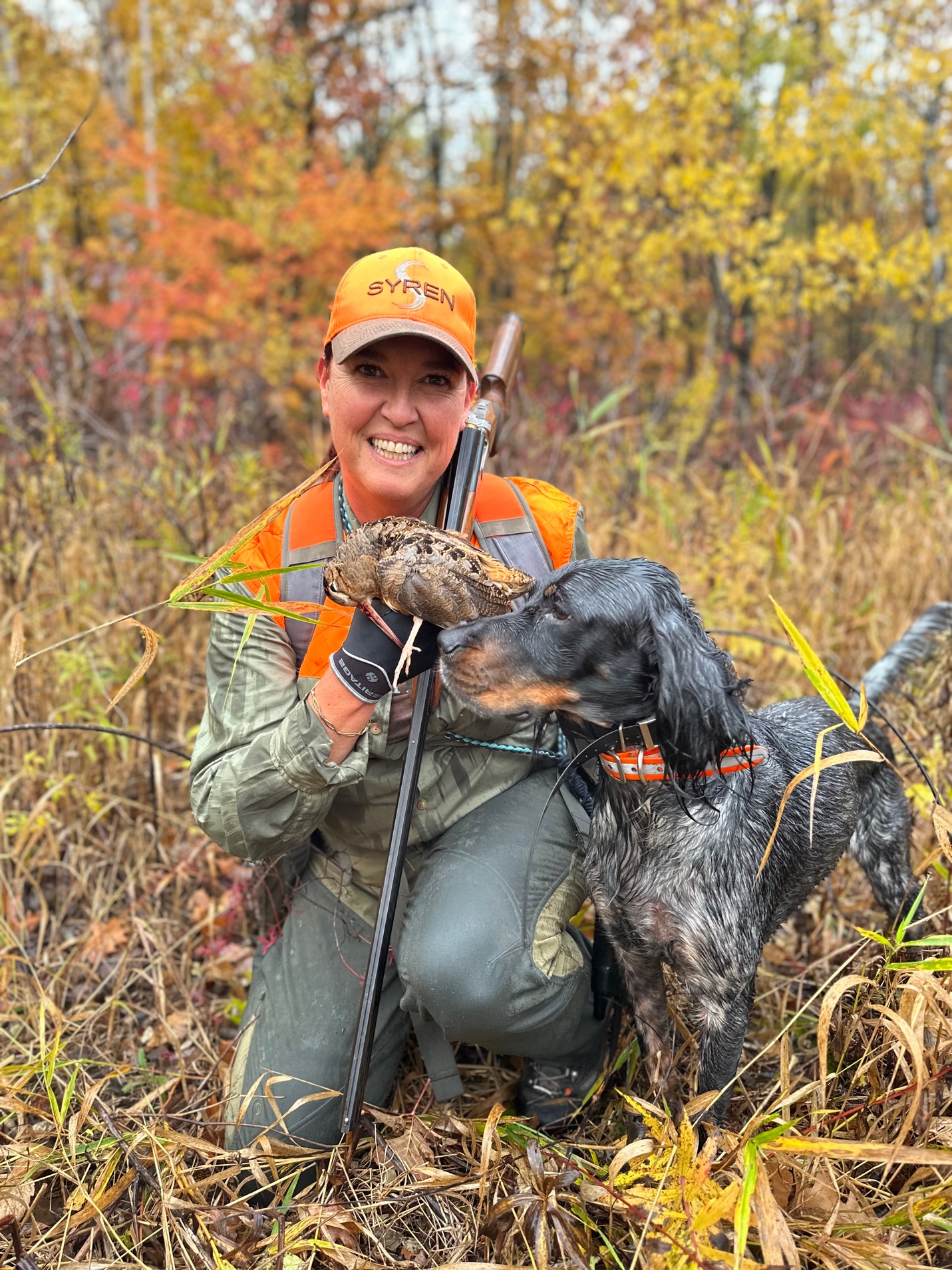BY KATE AHNSTROM
Yeah, how many times have you struggled a little with a particular presentation and when it all finally came together, you felt a sense of righteousness, muttering expletives to the clays as you stepped out of the box? I’ve certainly thrown my fair share of harsh language at those pesky things. Not that it helps break them, but it does make me feel better.
There are several variables and factors to consider when shooting. Everyone has their “go to” loads. I love 1-1/8oz #8 1200 fps or 1250 fps as my main clay load. When it comes to hunting, it just depends on my selected quarry, as to what shells I will use. There are a million choices, all with their own pros and cons. Ammunition today though has pretty much exceeded the engineering of the guns themselves. It really is remarkable what we can do.
Other variables include the gun you shoot, your own abilities, weather, your mental game (more to come on this topic soon) and, of course, your choke set up. Yes, I went there. The dreaded choke tube conversation…sigh.
I’ve mentioned before that for fun I like to walk past die-hard skeet shooters and casually comment that I’m going to shoot a round with my 28 ga. O/U choked modified and light modified. The “harumphs” immediately follow, lol.
Does it really matter what choke I use?
Yes. Yes, it does. As with everything in life, there is always a happy medium that will serve you well in all aspects of the clay games. When it comes to sporting clays, there are any number of presentations, types of clays (rabbit, midi, etc.) and outside influences (sun, wind, rain).
Normally, I ask a student how their gun is choked at our first lesson. And, normally, they respond, “Good question!”. While I am not a fan of frantically changing your chokes out at every station, you should at least have a good foundation in understanding why chokes matter. A skeet choke on a zippy rabbit out at 45 yar ds is gonna be pretty disappointing. Same as a soft, incoming midi floating at just 15yards with a full choke.
Getting serious about selecting a choke
All my cracking guns are set up with Modified (M) in the top and Improved Cylinder (IC) in the bottom. I love this combo and so do many others. It’s a great team for the clay course and the hunt field. For those just getting into this sport, choke selection can be a bit overwhelming. It’s another thing they must sort out and add into their pre-shot plan. Once you’ve done it a few times, it becomes second nature. Don’t sweat it. When you get your show pair, pay attention to the distance and the type of clay used. Is it a rabbit? That’s a super thick, solid clay. You will want a tighter choke. Is it a battue out at 30 yards? That’s a fragile but skinny bird and a more open choke is your best friend.
When you are shooting a pair of birds, one of them will probably need a little different choke option. Do you have to worry about changing your chokes or selecting a different barrel to fire first? NO! Depending on your skill set, you will more than likely be able to break those birds. Is it easier to crush that pair more consistently with the ideal choke set up? YES! Anytime you can give yourself the advantage, especially in competition, do it! Again, this is why all my cracking guns are choked M/IC. That duo gets me through just about everything, no problem.
What if I only have a single barrel?
This is where you can get creative. I will shoot Mike’s Fabarm L4S on occasion. It’s an autoloader and normally choked skeet. He uses it for field trials and doesn’t want the mutilated bird penalty. To create a tighter pattern without changing chokes, which is impossible to do in mid-pair, I will use two different loads. A closer bird will receive a load of #9 shot and a farther bird will get 1-1/8oz 1290 fps #8 or #7.5. I just simply load the shells in the gun according to how the sequence will play out with the pair.
The next time you are at the course, take time to play around with your choke set up. Use just one presentation and see how different chokes and even different shot breaks that bird. Be sure to take a friend or family member with you and share the passion for the sport.
Kate Ahnstrom, owner of Virginia Shooting Sports is a certified, professional instructor of the Paragon School of Sporting, pro staff Syren/Caesar Guerini, resident pro Orapax Hunting Preserve, Artemis ambassador for Va, and field staff member of the Sisterhood of the Outdoors. Her tireless dedication to her students’ success is obvious in each and every lesson.



